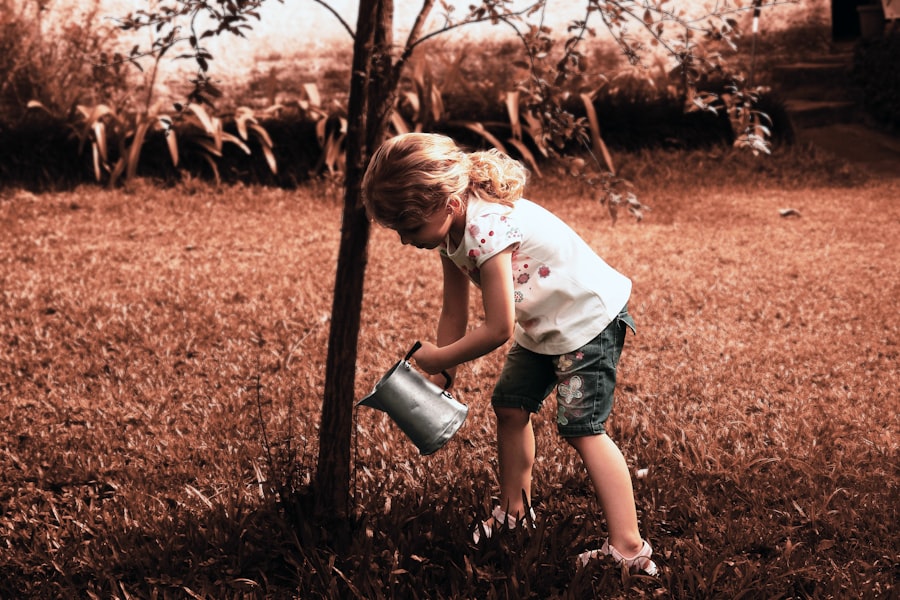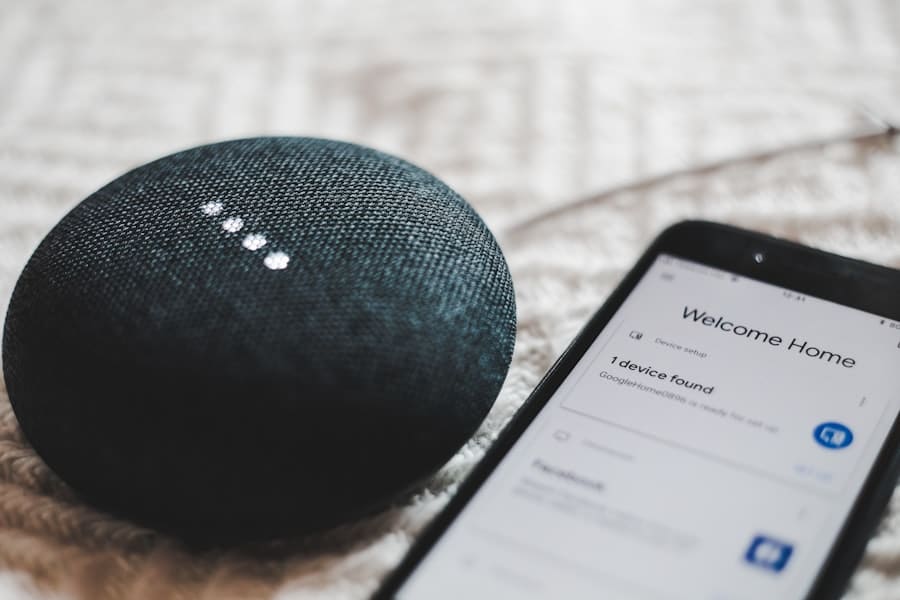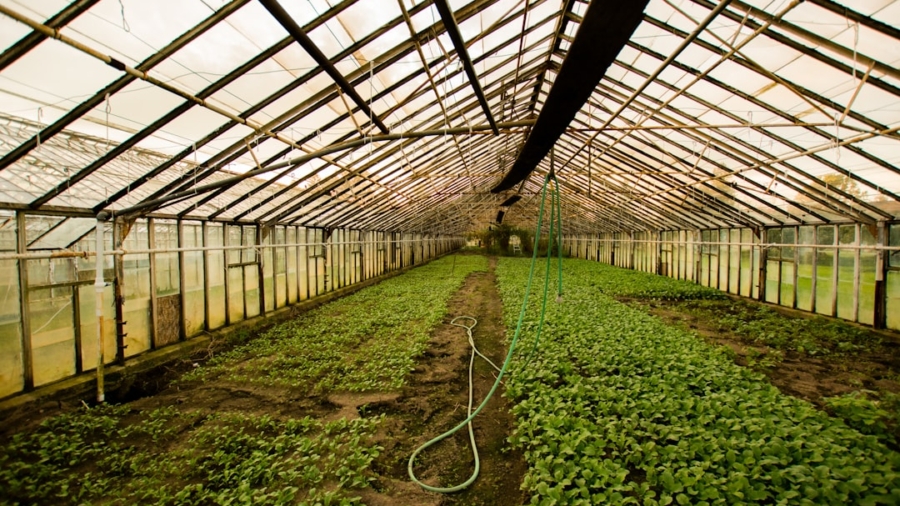The Internet of Things (IoT) has revolutionized various sectors, and home gardening is no exception. As urbanization increases and more people seek to cultivate their own food, the integration of technology into gardening practices has become increasingly relevant.
In the context of home gardening, IoT devices can provide real-time insights into plant health, environmental conditions, and resource management, making it easier for both novice and experienced gardeners to optimize their gardening efforts. The rise of smart gardening solutions has transformed traditional gardening into a more efficient and data-driven practice. With the help of sensors, cameras, and automated systems, gardeners can now access a wealth of information about their plants and the surrounding environment.
This technological advancement not only enhances the gardening experience but also promotes sustainable practices by minimizing resource waste and maximizing yield. As we delve deeper into the various applications of IoT in home gardening, it becomes evident that this technology is not merely a trend but a significant shift towards smarter, more efficient gardening practices.
Key Takeaways
- IoT in home gardening allows for remote monitoring and control of plant environments using smart devices and sensors.
- Benefits of IoT in plant care include improved plant health, reduced water and resource usage, and increased convenience for gardeners.
- IoT enables monitoring and controlling plant environment factors such as temperature, humidity, and light levels to optimize plant growth.
- Automating irrigation systems with IoT allows for precise and efficient watering based on real-time plant needs and environmental conditions.
- IoT can be used for soil moisture and nutrient monitoring, providing insights into the soil health and plant nutrition for better care.
- Implementing IoT for pest and disease control enables early detection and targeted treatment, reducing the risk of plant damage.
- Integrating IoT with smart gardening tools such as automated planters and garden management apps enhances the overall gardening experience.
- Future trends and innovations in IoT for home gardening may include AI-powered gardening assistants and advanced data analytics for personalized plant care.
Benefits of IoT in Plant Care
Real-Time Data for Timely Interventions
With the deployment of sensors that track various parameters such as temperature, humidity, light levels, and soil moisture, gardeners can receive real-time data about their plants’ conditions. This information allows for timely interventions when issues arise, such as adjusting watering schedules or providing additional nutrients.
Personalized Care for Different Plant Species
IoT technology facilitates personalized care for different plant species. Each type of plant has unique requirements regarding light, water, and nutrients. By utilizing IoT systems that can analyze these specific needs, gardeners can tailor their care routines accordingly. For example, a gardener growing both succulents and ferns can set up distinct monitoring parameters for each plant type.
Customized Recommendations for Optimal Growth
The IoT system can then provide customized recommendations based on the specific needs of each plant, ensuring that they thrive in their respective environments. With IoT technology, gardeners can receive alerts and notifications when their plants require attention, allowing for prompt action to prevent issues such as drought stress.
Monitoring and Controlling Plant Environment with IoT

The ability to monitor and control the plant environment is one of the cornerstones of successful gardening.
This data can be accessed remotely via smartphones or computers, allowing gardeners to keep an eye on their plants even when they are away from home.
For instance, a gardener on vacation can check the temperature in their greenhouse and adjust heating or cooling systems accordingly to maintain optimal conditions for their plants. In addition to monitoring, IoT technology enables automated control of environmental factors. Smart thermostats and humidity controllers can be integrated into the gardening system to maintain ideal conditions without manual intervention.
For example, if a temperature sensor detects that the greenhouse is becoming too hot during the day, it can automatically activate ventilation fans or shade cloths to cool down the space. This level of automation not only saves time but also ensures that plants are consistently cared for, reducing the risk of stress or damage due to fluctuating environmental conditions.
Automating Irrigation Systems with IoT
Irrigation is a critical aspect of plant care, and IoT technology has made it possible to automate this process effectively. Smart irrigation systems equipped with soil moisture sensors can determine when plants need water based on real-time data rather than relying on a fixed schedule. This approach not only conserves water but also ensures that plants receive adequate hydration when they need it most.
For instance, if a sensor detects that the soil moisture level is sufficient, the irrigation system will remain off, preventing overwatering and potential root rot. Furthermore, IoT-enabled irrigation systems can be programmed to respond to weather forecasts. If rain is predicted, the system can delay watering schedules accordingly.
This integration of weather data helps gardeners make informed decisions about irrigation practices, ultimately leading to more sustainable water usage. Additionally, some advanced systems allow users to control irrigation remotely through mobile applications, providing flexibility and convenience for busy gardeners who may not always be available to tend to their plants.
Using IoT for Soil Moisture and Nutrient Monitoring
Soil health is paramount for successful gardening, and IoT technology offers innovative solutions for monitoring soil moisture and nutrient levels. Sensors placed in the soil can provide continuous readings of moisture content, allowing gardeners to understand when their plants require watering accurately. This data-driven approach minimizes guesswork and helps prevent issues related to over- or under-watering.
In addition to moisture monitoring, IoT devices can also assess soil nutrient levels by measuring parameters such as pH, nitrogen, phosphorus, and potassium content. This information is crucial for maintaining healthy soil that supports robust plant growth. For example, if a sensor indicates low nitrogen levels in the soil, gardeners can take immediate action by applying organic fertilizers or compost to replenish nutrients.
By leveraging IoT technology for soil monitoring, gardeners can create a more balanced ecosystem that fosters healthy plant development.
Implementing IoT for Pest and Disease Control

Pest management is a significant challenge for gardeners, but IoT technology provides innovative solutions for early detection and control of pests and diseases. Smart cameras equipped with image recognition capabilities can monitor plants for signs of infestations or disease symptoms. These cameras can send alerts to gardeners when they detect unusual patterns or changes in plant appearance, enabling timely intervention before problems escalate.
Moreover, IoT systems can integrate with pest control measures such as traps or repellents. For instance, if a camera identifies aphids on a plant, it can trigger an automated response by activating a nearby insect trap or sending a notification to the gardener’s smartphone with recommendations for organic pest control methods. This proactive approach not only minimizes damage to plants but also reduces reliance on chemical pesticides, promoting a healthier gardening environment.
Integrating IoT with Smart Gardening Tools
The integration of IoT with smart gardening tools has created a new era of efficiency in home gardening. Tools such as smart planters and automated garden beds are designed to work seamlessly with IoT technology. These devices often come equipped with built-in sensors that monitor various environmental factors while providing gardeners with actionable insights through connected applications.
For example, smart planters may feature self-watering capabilities that adjust based on real-time moisture readings from embedded sensors. Gardeners can monitor their plants’ health through an app that provides updates on growth progress and alerts them when it’s time to fertilize or repot. Additionally, some smart gardening tools offer compatibility with voice assistants like Amazon Alexa or Google Assistant, allowing users to control their gardening systems through simple voice commands.
This level of integration enhances user experience and makes gardening more accessible for individuals who may not have extensive horticultural knowledge.
Future Trends and Innovations in IoT for Home Gardening
As technology continues to evolve, the future of IoT in home gardening looks promising with several emerging trends on the horizon. One notable trend is the increasing use of artificial intelligence (AI) in conjunction with IoT devices. AI algorithms can analyze vast amounts of data collected from various sensors to provide predictive insights about plant health and growth patterns.
This capability could lead to more precise care recommendations tailored to individual plants’ needs. Another exciting innovation is the development of vertical farming systems integrated with IoT technology. These systems allow urban dwellers with limited space to grow fresh produce indoors using hydroponic or aeroponic methods while leveraging IoT devices for monitoring and automation.
As urban agriculture gains traction, these smart vertical farms could become commonplace in homes around the world. Additionally, advancements in renewable energy sources will likely play a role in shaping the future of IoT in home gardening. Solar-powered sensors and irrigation systems could reduce energy consumption while promoting sustainability in gardening practices.
As awareness of environmental issues grows, more gardeners will seek eco-friendly solutions that align with their values. In conclusion, the integration of IoT technology into home gardening presents numerous opportunities for enhancing plant care and promoting sustainable practices. From real-time monitoring of environmental conditions to automated irrigation systems and pest control measures, IoT empowers gardeners with tools that simplify their tasks while maximizing plant health and productivity.
As innovations continue to emerge in this field, we can expect even greater advancements that will further transform how we approach home gardening in the years to come.
If you are interested in optimizing your content for better search engine results, you may want to check out NeuronWriter SEO NLP Optimization. This tool can help boost your content and make it more visible online. Additionally, if you are curious about whether Samsung smartwatches work with rooted phones, you can find more information on that topic as well. And if you are looking for the best AI video generator software, be sure to discover the options available today. These articles offer valuable insights into different aspects of technology and can complement the discussion on automating home gardening and plant care through IoT. NeuronWriter SEO NLP Optimization, Samsung smartwatches and rooted phones, Best AI video generator software.
FAQs
What is IoT?
IoT stands for Internet of Things, which refers to the network of physical devices, vehicles, home appliances, and other items embedded with sensors, software, and connectivity that enables them to connect and exchange data.
How does IoT automate home gardening and plant care?
IoT devices such as smart sensors, automated watering systems, and connected gardening tools can monitor and control environmental conditions, water levels, and nutrient levels in the soil, providing real-time data and automating tasks such as watering and fertilizing plants.
What are the benefits of using IoT in home gardening?
Using IoT in home gardening can lead to improved plant health, reduced water usage, increased efficiency, and convenience for the gardener. It can also provide insights and data analytics to help optimize plant care and maximize yields.
What are some examples of IoT devices for home gardening?
Examples of IoT devices for home gardening include smart plant sensors, automated irrigation systems, connected weather stations, and smartphone apps that provide real-time monitoring and control of garden conditions.
Are there any security concerns with using IoT in home gardening?
As with any IoT devices, there are potential security concerns such as data privacy, hacking, and unauthorized access. It’s important to use secure and reputable IoT devices and to regularly update their software to mitigate these risks.

